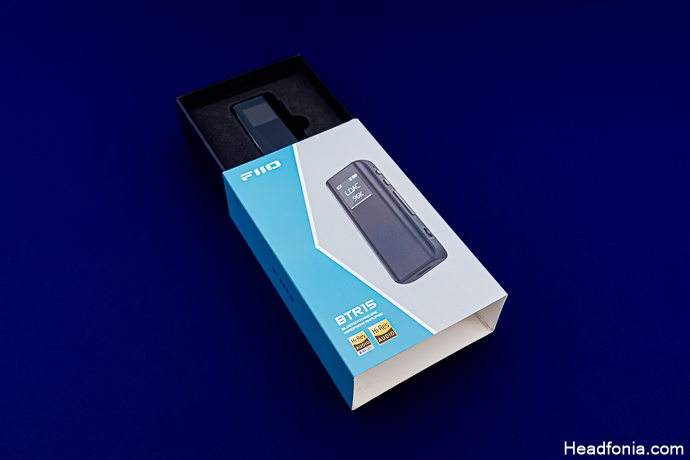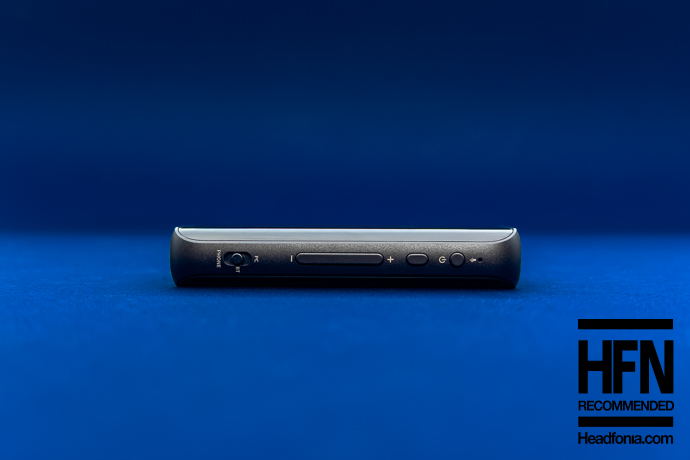Today, we are checking out the new FiiO BTR15 BT DAC/AMP. It’s selling for only $109 USD.
Disclaimer: FiiO sent us the BTR15 Bluetooth DAC & AMP for the purpose of this review. As always, the article reflects my unbiased opinion.
FiiO
FiiO is one of the most popular audiophile-oriented companies in the world. They design and manufacture a wide range of audio products for different price ranges. They have been in this industry since 2007 and are very popular with fans all over the world. They have entered the Bluetooth playground with solid products, and today, we are looking at their newest unit from the BTR series, the BTR15. We’ve reviewed and awarded a lot of FiiO equipment here at Headfonia over the years, and you can read those reviews here: Headfonia FiiO Reviews.
FiiO BTR15 – Portable Bluetooth DAC & Amplifier – What’s New?
FiiO labeled the BTR7 as a high-end member of the BTR series. It was introduced to the Bluetooth market with a better, more advanced audio circuit architecture than the BTR5 2021, released two years ago. Now, it has been a year since the launch of the BTR7, and FiiO launched yet another BTR, enumerated 15. The BTR15 features dual ES9219MQ chipsets, a newer version of the BTR7’s ES9219C chips. For the amp side, they have reverted to conventional op-amps; however, the BTR15 offers more driving power at 340mW(@32Ω), which is higher than both the BTR7 and the BTR5 2021. Apart from these changes, BTR15 features the newest 3rd XMOS USB controller and newer QCC5125 Bluetooth Codec compared to the 2nd gen XMOS and the QCC5124 on the BTR7. The BTR15 resembles the BTR5 2021 in many ways, sharing a similar design with two glass panels sandwiching an aluminum frame. Compared to the BTR5 2021, the BTR15 has an upgraded 0.96-inch monochrome OLED display. However, the BTR5 2021 supported NFC connectivity, but the BTR15 does not. That being said, I would like to emphasize the importance of implementation rather than technical specifications.
- DAC: ESS Technology ES9219MQ x2 (Dual DAC Config.)
- Bluetooth Chipset: Qualcomm QCC5125 Bluetooth 5.1
- USB Controller: XMOS XU316
- Supported Codecs: AAC / SBC / AptX Adaptive / AptX LL / AptX HD / LDAC
- Outputs: 3.5mm Unbalanced x1 – 4.4mm Balanced x1
- Wired USB DAC Mode: Native DSD up to DSD256 – PCM up to 384kHz + MQA Full Decoder (via USB)
- App Support: FiiO Control + OTA FW Updates
- Microphones: Built-in Omnidirectional Mic
- Battery: 550 mAh
- Dimensions & Weight: Approx. 32.0×72.2×12.5mm – 37.5gr
- BTR15’s dedicated web page can be found here. Drivers and the newest firmware can be downloaded here. Tested FW Version: v2.2
- I recommend checking out FiiO’s FAQ section for more information.

Packaging & Accessories
FiiO has once again revised its packaging design, beginning with the BR13. The new packaging is simpler, featuring a two-tone design in grey and light blue. I was particularly fond of the previous, late-2021 black packaging, which featured a rainbow-effect coating. The current packaging displays a picture of the BTR15 on the front and its specifications on the back.
Upon sliding off the cover, you are greeted by a foam compartment where all items are neatly arranged. An ABS plastic case with a clip and a small USB-C to USB-C cable for charging the device is included. In a departure from the previous generation, FiiO has added a compact USB-A (male) to USB-C (female) adapter, replacing the standard A-to-C cable. The included USB-C interconnect cable is of good quality and surprisingly supple. Unfortunately, no leather case is included. As additional info, the BTR15 will not feature an Apple Edition (which typically includes a USB-C to Lightning cable), given Apple’s transition to USB-C with the iPhone 15 series.

Design & Build Quality
The BTR15 shares many design elements with the BTR5 2021. FiiO has used glass panels on both the front and back, with curved edges and an aluminum chassis in between. This design choice makes the device slightly susceptible to scratches; however, in my 1.5 months of regular use, I didn’t encounter any scratching problems. A notable upgrade to the BTR15 is the larger 0.96-inch monochrome OLED display, which improves the accessibility of information about the unit and playback. Sample rate, volume level, battery status, and menu navigation are all clearly visible on this screen.
As you would expect from FiiO, the black anodized finish is of the highest quality, and my sealed review unit is free of any manufacturing defects. The unit has an expensive and elegant look, often mistaken for a high-end peripheral by those unfamiliar with the hobby. Indeed, a friend of mine mistook the BTR15 for a niche compact power bank at first glance. The unit has four buttons on the right side of the chassis, arranged from top to bottom as a power button, a multifunction button, and a volume control button. The balanced and unbalanced outputs are conveniently located at the top of the case, with the USB-C input at the bottom.

The overall build quality is quite good, and I think it is safe to say that the unit can withstand a certain amount of physical abuse. The tempered glass is not overly susceptible to scratches, but it is not completely scratch-proof either, so careful handling is advised. The slippery surface also makes the device prone to slipping from the hand, so care is needed here, too. It is both small and light, weighing in at around 37 grams, which is comparable to the size of a cigarette lighter. Additionally, compared to the BTR5 2021, FiiO has managed to reduce weight by around 8 grams.
Amplitude & Chipset
The BTR15 significantly outperforms both the BTR5 2021 and BTR7 in terms of power output, thereby displaying its ability to efficiently drive a wide range of audio equipment, including closed-back cans and IEMs, on-the-go. The 3.5mm unbalanced output delivers approximately 125 mW into a 32 ohm load, while the 4.4mm balanced output significantly increases this to approximately 340 mW into a 32 ohm load.
The need for balanced output’s extra power depends largely on the IEMs used with the device. For the majority of IEMs on the market, the purchase of balanced cables for the sake of increased power may not be necessary, especially for those who use the device primarily wirelessly. However, for audiophiles who chase every last bit of the dynamic range, investing in a balanced cable is recommended. In addition, Android users may find it beneficial to explore the UAPP, which allows the use of bit-perfect mode with USB DACs by passing OS limitations, along with a variety of other audio adjustments. It’s important to note that these enhancements are primarily relevant to the wired use of the unit.

In terms of signal stability, FiiO has upgraded from the QCC5124 chipset used in the BTR7 to the newer, more efficient QCC5125 Bluetooth chipset in the BTR15. Qualcomm’s 51XX series chipsets are known for their premium quality, high efficiency, and stability and are a common choice in many high-performance Bluetooth devices. The BTR15 continues this tradition, providing excellent signal stability. In my experience, I’ve been able to control my active monitors from about three rooms away both with BTR5 and BTR15. However, pushing the BTR15 to its limits by enabling LDAC and maximum transfer rate via the Android developer options reduces this range significantly, which is normal. With these maxed-out settings (LDAC & 990kbps), the effective range is around 5 meters.
Features & Control
The device can be controlled via three buttons on the right side of the chassis. Every button offers a multifunction to make it easier for you to use the device. They allow users to power the device on and off, activate pairing mode, manage playback with play/pause functions, answer or end calls, and navigate through tracks. A double press of the power button activates the phone’s default voice assistant, providing hands-free playback control.
The FiiO Control App significantly expands the customization options. Through the app, users can remap the functions of each button to their liking, utilizing hold and double-press functionalities. The FiiO Control app can be used to adjust the idle power-off timer to conserve battery life, manage and store equalizer presets, including parametric controls, and set volume limits. Users can also fine-tune the call and Bluetooth volume, adjust the channel balance, and switch on the Dual DAC mode for slightly better audio fidelity when using the single-ended connection. Dual DAC toggle only works with SE output, as using the BAL out automatically uses both of the DACs by default.

Some of the device features are exclusively accessible via the on-device menu, necessitating direct interaction for adjustments; however, once set, you won’t meddle with these much. Among these are the DAC filter options, HYBRID and FAST, a CAR mode, which intelligently powers the device on and off in tandem with the vehicle’s engine, making it an excellent companion if your car has a 3.5mm input. Furthermore, users can manage auto charging settings to prevent unnecessary battery wear during wired use, modify screen dimmer options to suit various lighting conditions, and select between USB 1.0 and USB 2.0 interface types, enhancing the BTR15’s compatibility with a range of devices, including legacy systems and handheld consoles.
The ability to disable automatic charging is particularly beneficial for users who prefer a wired connection or aim to maximize the device’s battery lifespan. Additionally, the device offers a precise 60-step hardware volume adjustment. FiiO’s dedication to providing a user-centric experience is evident in the comprehensive control options of the BTR15. By catering to both casual users and audiophiles, FiiO ensures that the BTR15 delivers a customizable and convenient audio experience for a wide array of scenarios and preferences. The full list of device controls can be found here.
The review continues on Page Two, after the click HERE or by using the jump below.
Page 1: FiiO, BTR15, Packaging & Accessories, Design & Build Quality, Amplitude & Chipset, Features & Control
Page 2: MQA, Battery, Comparative Sound & Performance, Last Words








Michael Gunin
Thanks a lot for reviewing! Speaking of BTR7, do you think it still has a better overall SQ compared to BTR15, or it’s just the tonality that is different?